Do you want to make your content more vivid and draw readers into the stories? Infotainment could be the key to presenting information in an engaging way. It allows you to entertain as well as inform the reader. If you don't want to write the text like a dry legal document but want to work with creative elements, you will find valuable approaches here.
Key Insights
Infotainment combines information with entertainment. Use metaphors or stories to illustrate your points. Keep the stories short but concise so that the reader is engaged. Make a clear connection to the needs and interests of your target audience. In the end, there should be a clear call to action to prompt the reader to take action.
Step-by-Step Guide
Step 1: What is Infotainment?
The term infotainment is a combination of the words "information" and "entertainment." It is about presenting informative content in an entertaining style. The key is to evoke emotions without exaggerating. A slight smile or an "aha" effect can often be enough to spark interest.
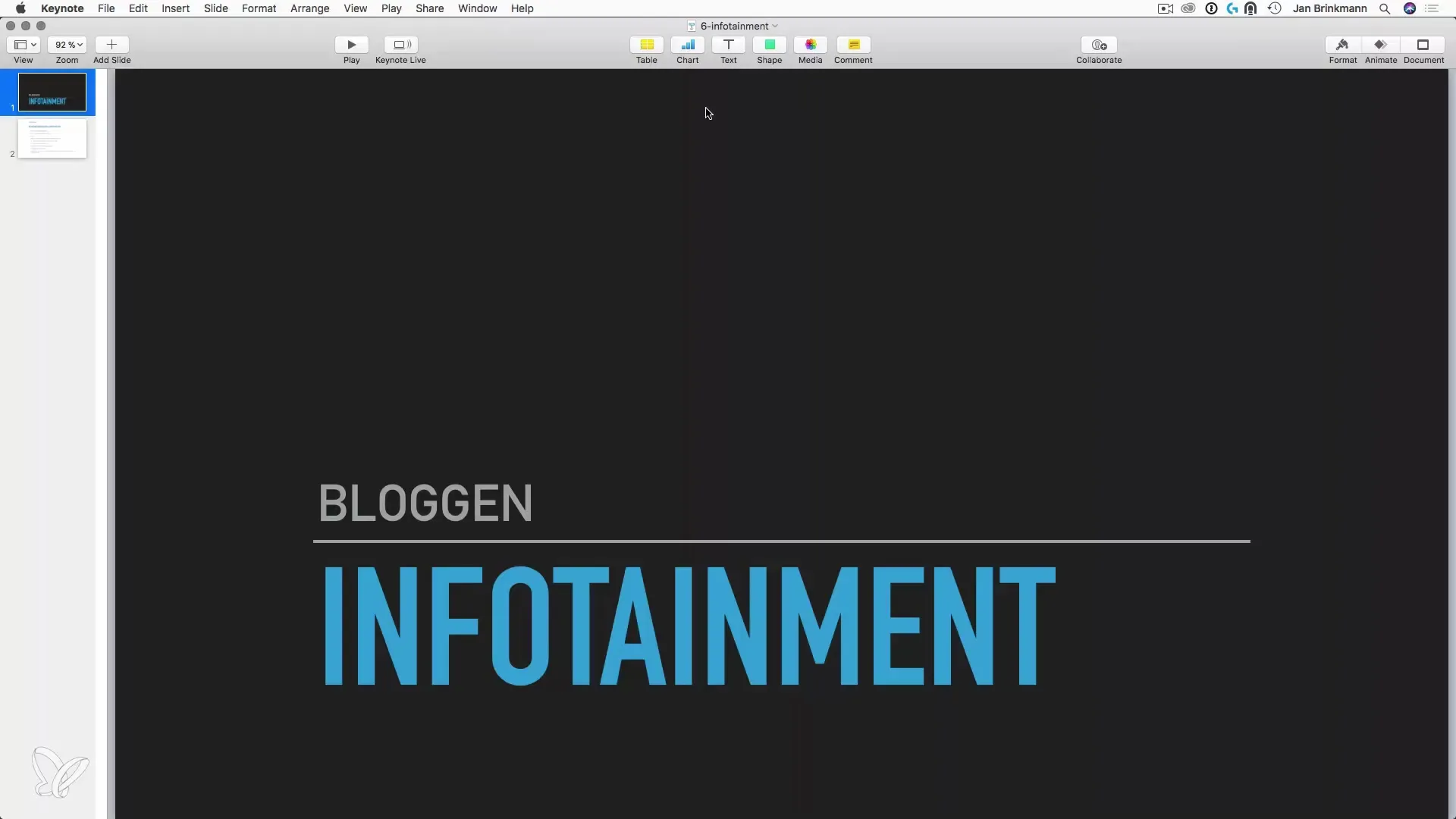
Step 2: The Power of Stories
Start your text with a small story or metaphor. It doesn't need to be epic; two paragraphs are often enough. The story should have a character and a plot. You can either share your own experiences or place the reader in a fictional situation to engage them emotionally.
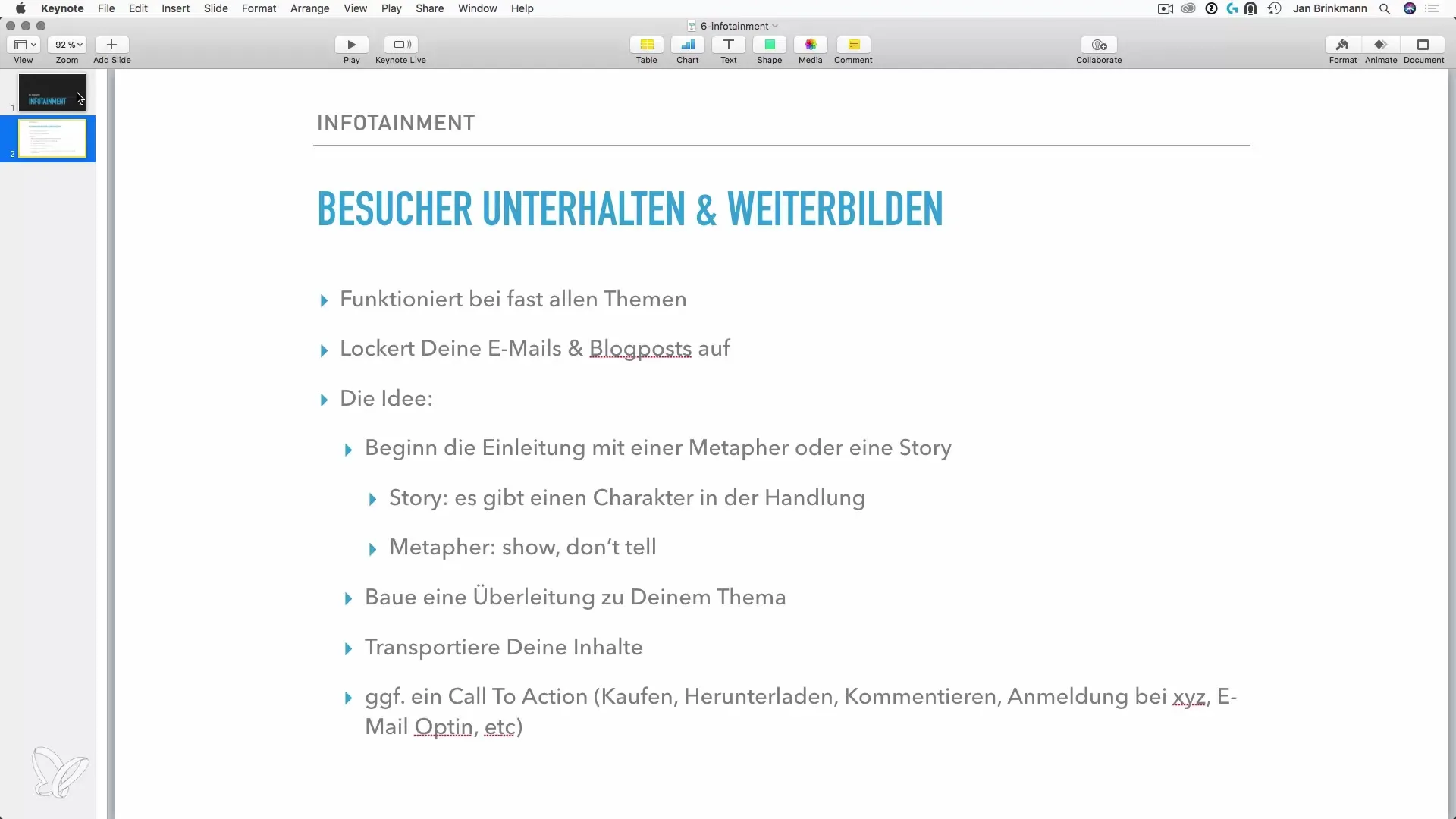
Step 3: Finding an Effective Metaphor
Metaphors are an excellent tool for making complex ideas more understandable. For example, you could use the story of a frog being boiled in a pot of water that is slowly heated. This story illustrates how people can often find themselves in difficult situations without realizing it. Show the reader how they too should be cautious not to fall into a similar trap.
Step 4: Connecting with Your Audience
Don't lose sight of your reader. It's important to create a connection from the story to your topic. Ask yourself, "What does this have to do with me?" or "What benefit does this provide me?" This helps the reader to make a clear connection to your content and recognize its practical value.
Step 5: Introducing the Call to Action
A successful infotainment text also includes a clear call to action (CTA). Consider what you want from the reader: Should they sign up for a newsletter, leave a comment, or purchase a product? The CTA should naturally align with the preceding story and motivate the reader to take action.
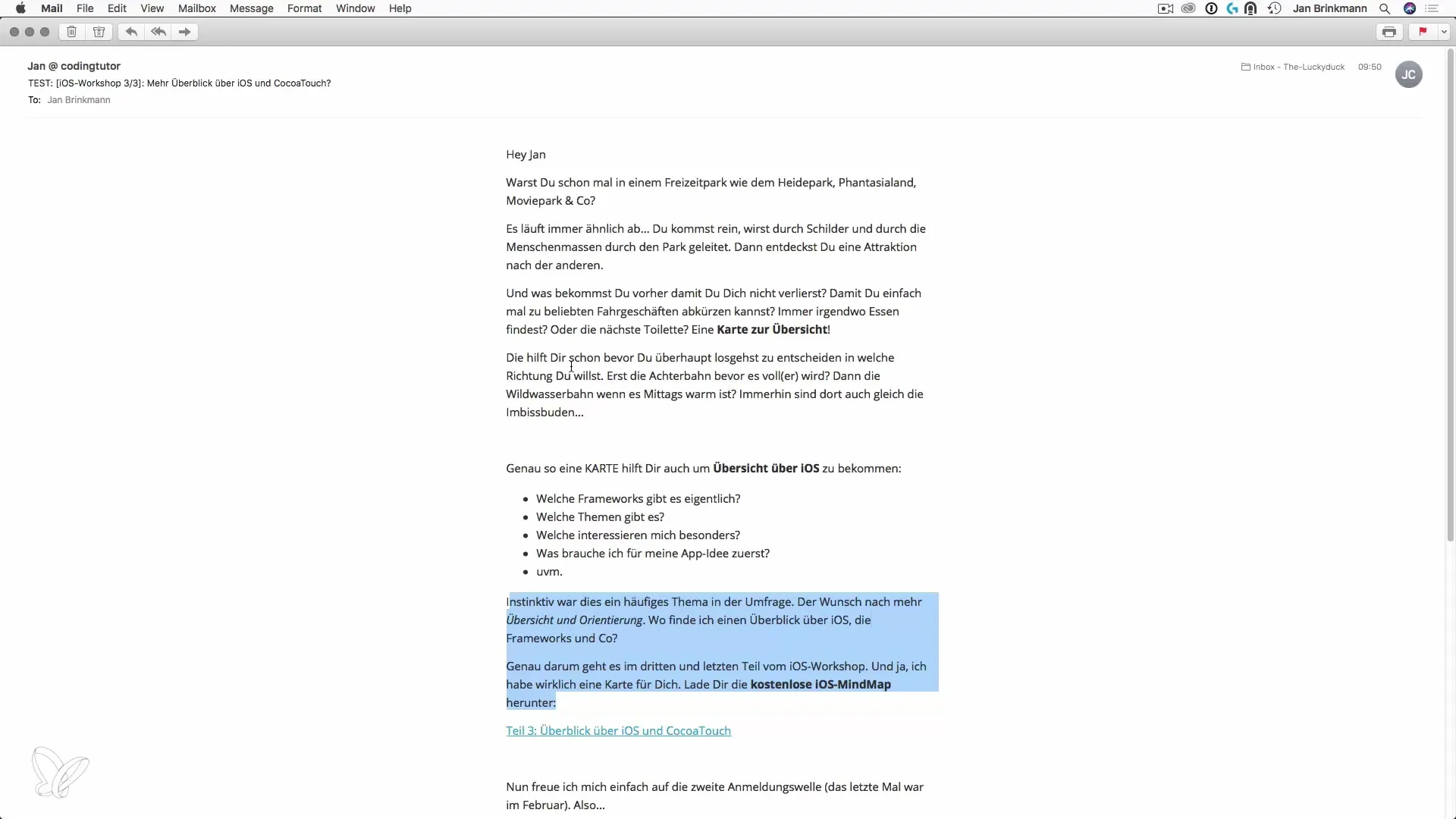
Step 6: Practical Examples
Let's say you are writing about a technical topic, such as iOS development. Start with a story about a visit to an amusement park where orientation is key. You can use this metaphor to explain how important it is to have an overview of various tools and frameworks in software development.
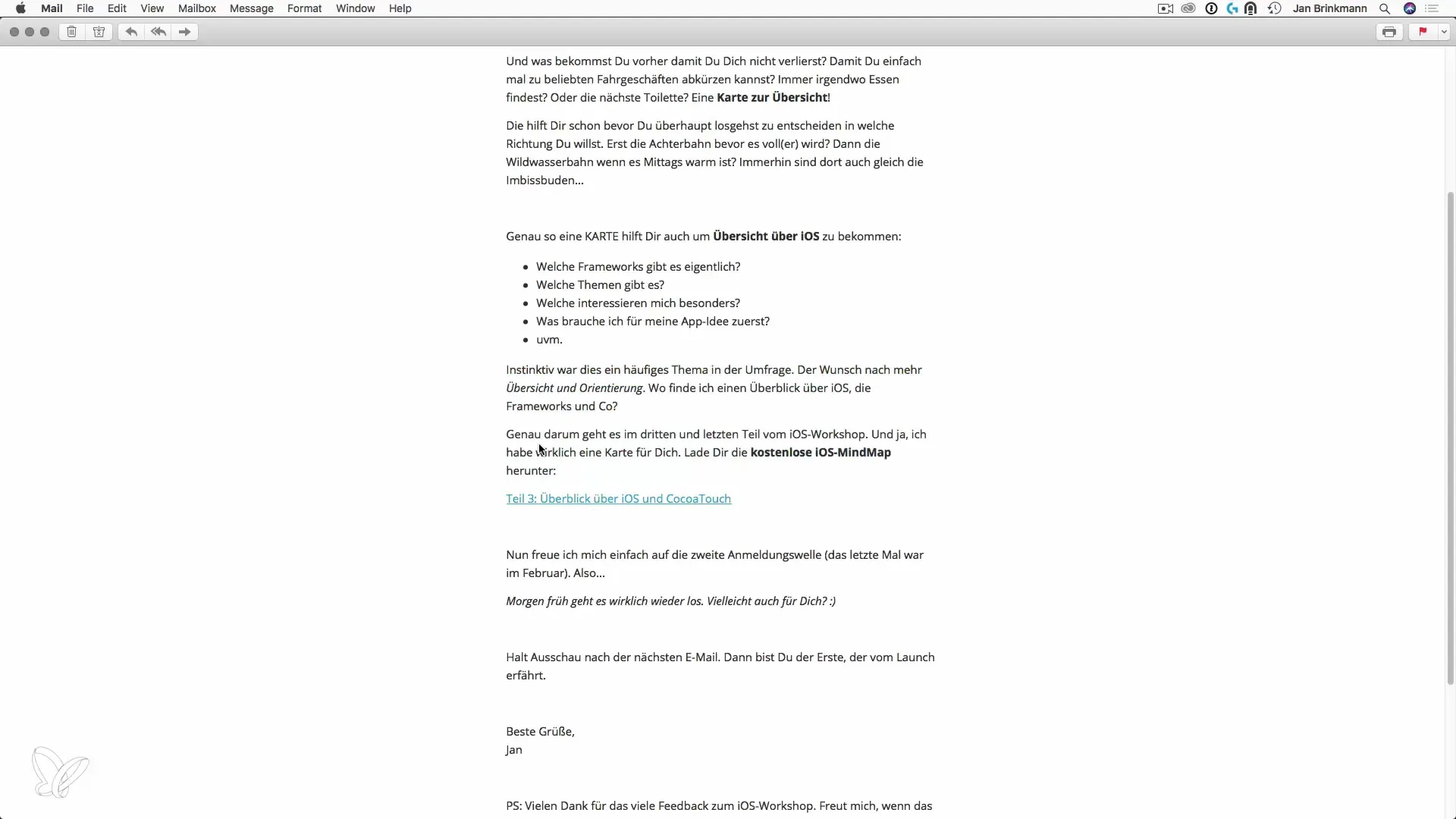
Step 7: Ensuring Relevance
To ensure that your text remains read long-term, relevance is crucial. Consider what your readers associate with your topic. Address their needs and try to incorporate them into your text. This can help ensure that your emails or blog posts remain interesting in the future.
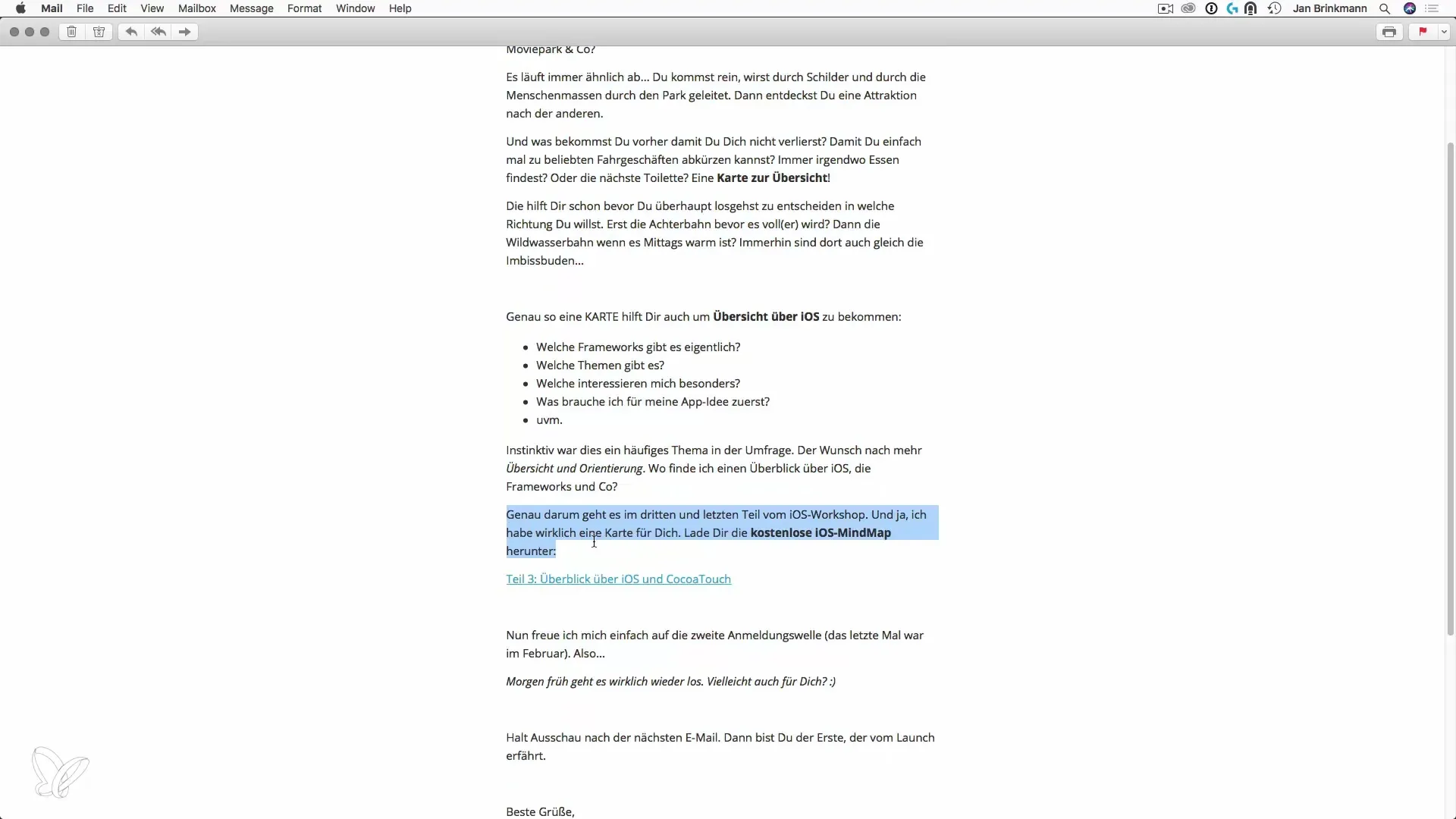
Summary – Customer Acquisition through Facebook and Google AdWords: Effectively Using Infotainment
Summarize the main points you have considered: The combination of information and entertainment creates an inviting text. The introduction of stories, the connection to the target audience, and a strong call to action are crucial for the success of your infotainment approach.
Frequently Asked Questions
What is infotainment?Infotainment combines information with entertainment to make content more vivid.
How do I find a suitable metaphor?Think of everyday situations or stories that illustrate the topic of your content.
How do I create a connection with my audience?Ask yourself what questions or problems your target audience has and create a clear connection to your content.
What should a call to action include?The call to action should be clear and motivating to encourage the reader to take action.
Why are stories important?Stories emotionally engage the reader and make information more tangible.


